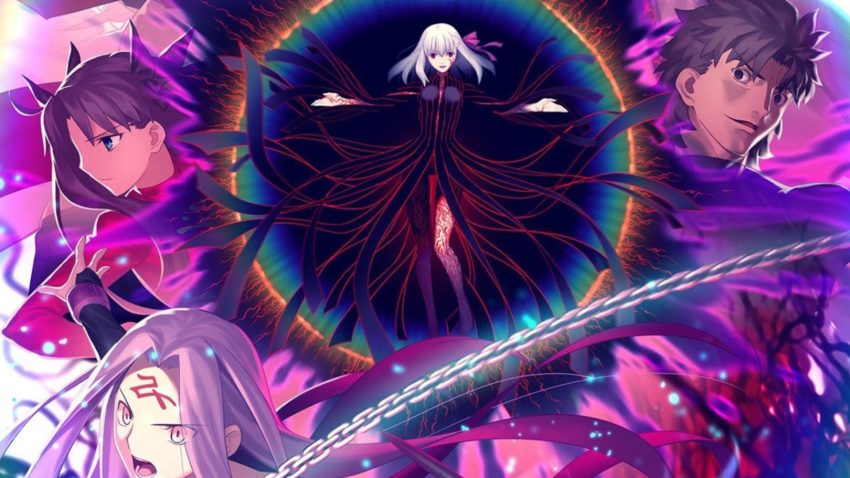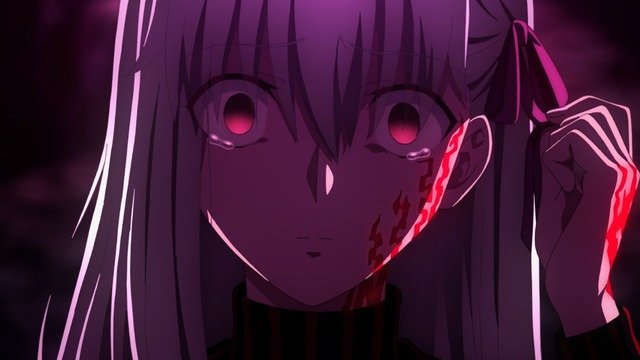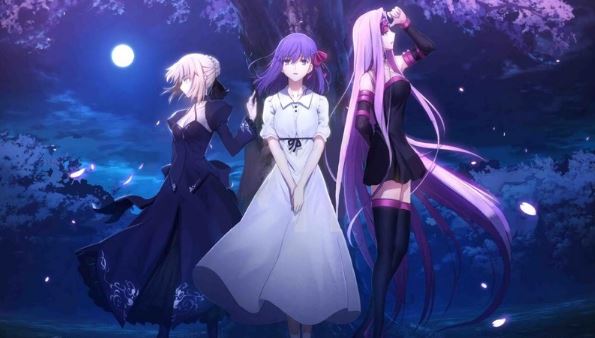Fate/stay night: Heaven’s Feel III
September 30, 2021 · 0 comments
By Kim Morrissy.

The animation studio ufotable is best known these days for the record-shattering hit anime Demon Slayer: Kimetsu no Yaiba. Yet in the same year the Demon Slayer film conquered Japan, ufotable produced another, lesser-known masterpiece: Fate/stay night: Heaven’s Feel III. spring song, the third in a trilogy of films adapting the niche video game Fate/stay night.
Those who have followed ufotable’s output for years may scoff at the suggestion that Fate/stay night was merely an obscure footnote in the history of Japanese animation. The studio’s image was defined by its relationship with Fate/stay night developer Type-Moon for well over a decade, beginning with the Garden of Sinners films between 2007 and 2009. Among anime devotees, the “Fate” series became a household name with the release of the Fate/Zero prequel animein 2011, followed by Fate/stay night: Unlimited Blade Works in 2014. At the time it was announced, the Heaven’s Feel trilogy was easily ufotable’s most hotly anticipated project.
The “Fate” series has since become a global franchise – the Fate/Grand Order spin-off game is among the top-grossing mobile games in the entire world. By any metric, then, Fate/stay night is a success story and a testament to the magnetic power of animation. In retrospect, Japan’s Demon Slayer fascination should have come as no surprise: ufotable had already provedthat its animation has the capacity to make stories punch well above their weight.

It can’t be understated what a niche enterprise Fate/stay night was in its original incarnation. The game takes the form of a “visual novel” with very limited player interaction, made on a limited budget with the expectation of only selling a few thousand copies at most. At the time, writer Kinoko Nasu and his longtime illustrator friend Takashi Takeuchi were indie creators not long out of university; when their homebrew visual novel Tsukihime picked up a positive reputation at Japan’s Comic Market, they were given the opportunity to create their first commercial game under the same format.
Unbound by the limitations of a triple-A game development cycle, Nasu told a richly immersive fantasy tale in Fate/stay night: Seven “Heroes” of world history and myth are summoned into modern Japan as participants in a battle royale to claim the wish-granting Holy Grail. They are partnered with mages who fight in secret at night, living double lives as ordinary citizens in daytime. The rules and culture of mage-craft are portrayed with intricate detail, while the limited animation gave readers the room to project themselves into the world.
By the standards of PC visual novel games, Fate/stay night was a massive hit, quickly cementing its status as the best-selling game in its category. It was the very definition of an “otaku” success – popular among a small crowd of diehard enthusiasts, but unlikely to see the light of day anywhere else. For one thing, the game featured explicit sex scenes. Even if such content was removed from later re-releases and the subsequent screen adaptations, it doesn’t change the fact that Fate/stay night was created without mainstream ambitions in mind.
This context is what makes Fate/stay night’s success as an anime extra impressive. Studio Deen’s television adaptation in 2006 was modestly popular, but it was ufotable’s works that struck a particular chord among viewers. The awe-inspiring majesty of the Heroic Spirits and their cataclysmic signature moves (called “Noble Phantasms”) were brought to life in a way that did justice to the breathless descriptions in Nasu’s prose. Even after other studios threw their hat into the “Fate” ring, ufotable’s house style stood out as particularly distinctive and attractive: cool and dark colors juxtaposed with vibrant special effects and a glossy, cinematic sheen.

It was a perfect fit for the game’s mature atmosphere, which was itself deeply inspired by the urban fantasy horror novels of Hideyuki Kikuchi. Much like Demon City Shinjuku, the world of “Fate” depicts an unsettling otherworldliness seeping through the cracks of modernity, punctuated by bursts of grandiosity. Yet unlike the earlier classic, “Fate” had the benefit of modern post-production techniques to enhance its flavour. Compositing director Yuichi Terao was particularly inspired by a photo he took of Tokyo’s nightscape from the roof of ufotable’s studio building. That photo-like essence is the throughline of ufotable’s Fate/stay night, and it is taken to new heights in Heaven’s Feel.
Perhaps the most amusing thing about the Heaven’s Feel films is that they make little attempt to get the viewers up to speed. They adapt the third and final storyline of the original game while also functioning as a sequel to the earlier Fate/Zero and Unlimited Blade Works anime. In this way, they are unabashedly “otaku” films aimed at people already in the know about the franchise.
It’s the kind of thing that ought to be utterly incomprehensible to any newcomer, and yet Heaven’s Feel is remarkably striking and mesmerising even with only partial context. As it turns out, if you’re the master at speaking the language of cinema, you can afford to speak little. Despite cutting dozens of hours of content in its adaptation, these films succeed in telling an emotionally gripping story about a boy and a girl who are caught adrift in powers beyond their control. Scenes of the heroine Sakura struggling with a dark power that could free her from an abusive household are heartbreaking and riveting.
For all its niche qualities and impenetrable aspects as a franchise film, Heaven’s Feel is a must-watch for cinema lovers. It brings an unparalleled vision to the world of Fate/stay night, and the action scenes are a cutting-edge blend of 2D drawings against dynamic 3D backgrounds and digital effects. On a technical level, it even surpasses the heights of Demon Slayer, which is no mean feat indeed. It’s the representative example of just what animated cinema is capable of at the very top of its game – a spellbinding masterpiece that can bring out the “otaku” in anyone.
Kim Morrissy is the translator of Mari Okada’s From Truant to Anime. Fate/stay night: Heaven’s Feel III. spring song is screening at Scotland Loves Anime.
Leave a Reply